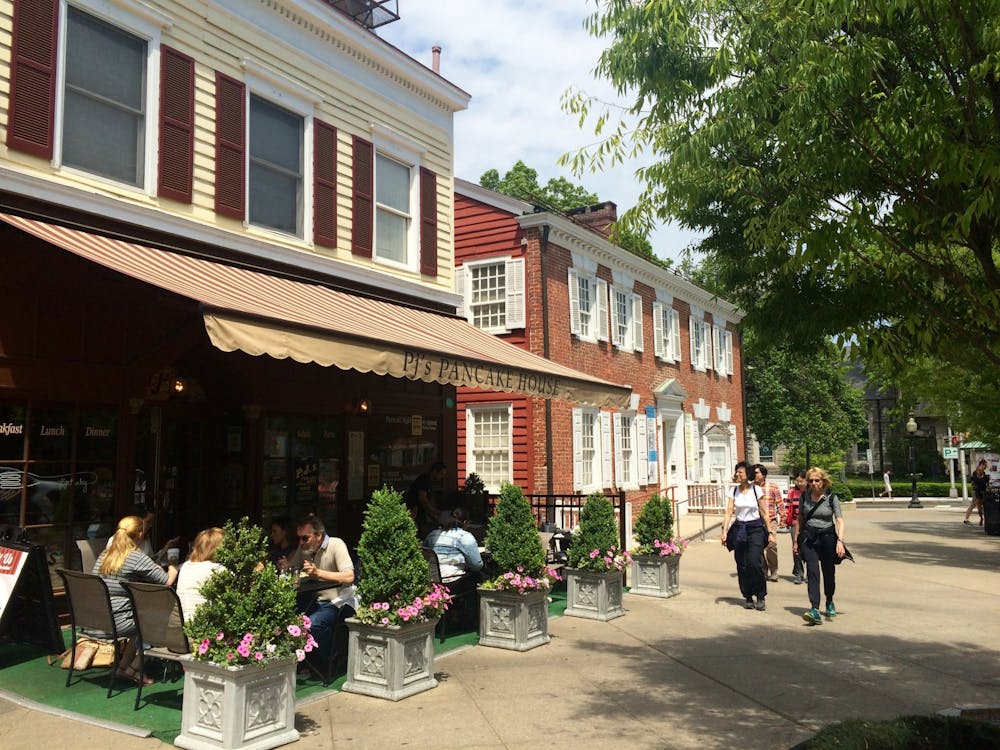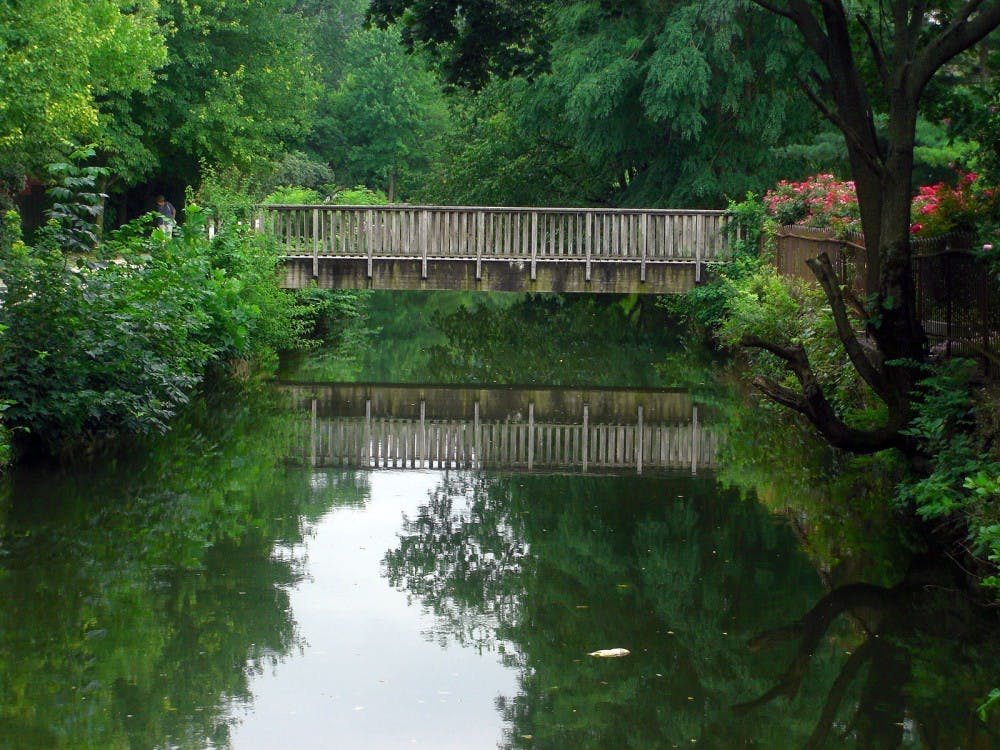As Laura Johnson '04 walks across the dance studio at 185 Nassau, her toes curl up frighteningly high, as if eager to resume their supple relationship with the dance floor.
Johnson is short and lithe; the slightest mo-tion seems to receive its impulse from her entire body. As she rolls nimbly across the floor and springs to her feet, I think of energy shuddering forth from a decompressed spring. It's as if she is condensing an explosive, im-petuous inner motion into a smooth, succinct line. It's almost feline.
It's a contrast to her specialty, Scottish dance, which she has studied since age seven. Scottish dance is a test of expressiveness within a strict framework. The dancer remains in one spot, maintaining a perfectly still, rigid upper body while combining fluid arm movement with athletic leaps. Throughout the dance, the feet are turned out as close to 180 degrees as possible.
The dance is always exhausting — two minutes of nonstop leaping to the beat of a bagpipe. It's performed in traditional costume: a heavy tartan kilt, matching tartan knee socks, vest, velvet jacket, and ghillies — soft leather slippers that lace up tightly to show off the dancer's pointed foot.
"When you finish, you're panting as though you've run a fifty-yard dash," says Johnson.
At Johnson's hometown studio in Cary, North Carolina, Scottish dancers cross-trained with aerobics, weight-lifting, swimming and ballet. In fact, Scottish soldiers originally used the dance to build stamina for battle. One of the variations they practiced was the Sword, danced in the four quadrants formed by two crossed swords laid on the ground.
If a dancer touched a sword, it was an omen that he would be wounded in battle. If he dislodged a sword, he would surely die.
In competition, dislodging a sword merely gets you disqualified. Johnson knows this because, starting at age eleven, she competed at the national level in Scottish dancing, finishing in the top three seven years running. At age seventeen, she headed to the world championships in Scotland.
She placed fifth in the Sword dance and fourth in the Seann Truibhas (pronounced "chantreuse"). Seann Truibhas — "old trousers" in Gaelic — is a nationalistic dance, featuring high kicks which simulate heaving off the "old trousers" of English influence.
Having studied ballet, modern and jazz dance in addition to Scottish dancing, Johnson joined BodyHype her freshman year at Princeton and was introduced to a new style: hip-hop. It has proved to be a good fit for her.
"Hip-hop is similar to Scottish dancing in a lot of ways," she says. "It's very precise, and you put a lot of attack into the moves."
She does not comment on the lamentable dearth of bagpipe hip-hop music.

While at Princeton, Johnson has taken classes in modern technique and choreography, and sacred dance. The variety of styles has enriched her approach to dancing, especially in the area of breath control.
"In many languages, 'breath' and 'spirit' are the same word," she says. "Modern dance requires you to be much more aware of your breath. In Scottish dancing, you almost don't breathe — it's a sprint."
She enjoys the opportunity to use her whole body in a wider range of movement and to do some lyrical, emotive dancing. "In Scottish dance, you're supposed to keep a pleasant but blank look on your face," she explains.
While she'll never abandon the swords and kilt, she says, "I'm glad to be continuing dance in a completely new and unexpected direction."
Johnson also sings in the Chapel Choir and serves on the Student Health Advisory Board. A premed student, she plans to major in history, with particular interest in the history of medicine and epidemiology.
"I'm not yet sure how I'll unite dancing and medicine in developing countries," she says, only partially joking.
Recently, for a seminar on international disaster relief, Johnson created a proposal for culturally-sensitive dance therapy for refugee children. Someday, she may teach or judge Scottish dance.
In the meantime, she still keeps a pair of ghillies around for practice.







